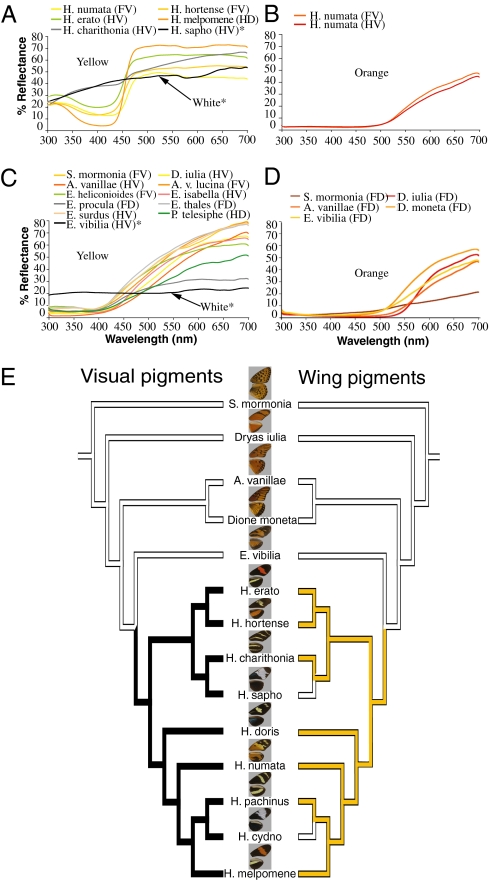Fig. 3.
Reflectance spectra of wing colors in the UV and visible range and UV opsin(s) in the adult heliconiine eye. Representative white, yellow, and orange reflectance spectra of (A and B) Heliconius and (C and D) non-Heliconius wing pigment colors. (A) Heliconius yellow pigments contain a UV component, unlike the yellow pigments found in other heliconiines shown in B. (E) Species tree derived from a maximum likelihood analysis of mitochondrial (COI) and nuclear (EF-1α) genes. Although yellow wing pigments occur in both Heliconius and non-Heliconius species, yellow pigments with a UV component (yellow, Right) were found to be more likely to occur in species with two UV opsins (black, Left) in the eyes than in species with only one UV opsin (white, Left) in a test of correlated trait evolution (LRT, P = 0.01). F, forewing; H, hindwing; D, dorsal; V, ventral.

